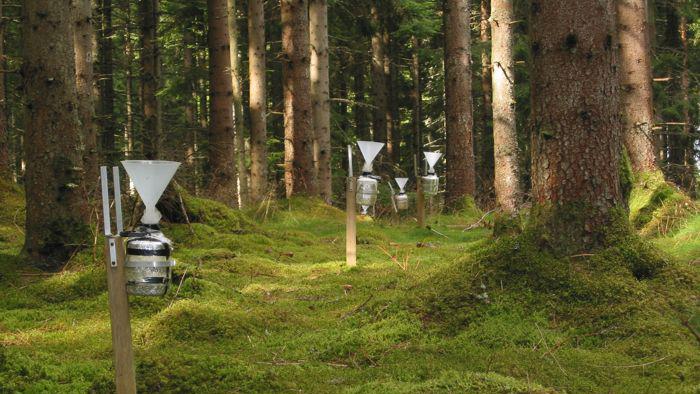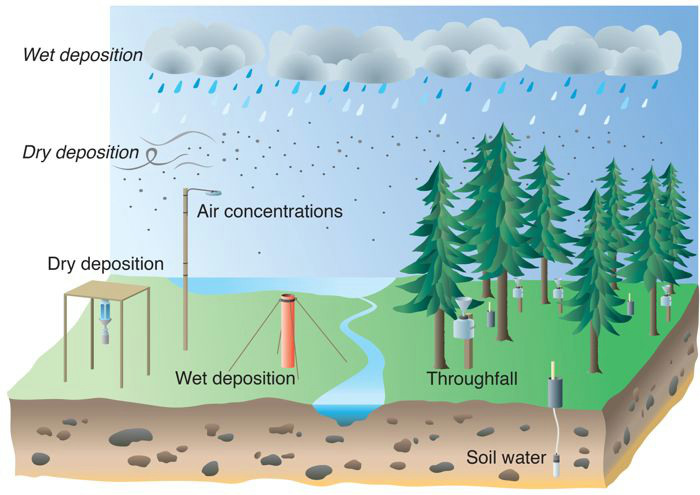- Startpage
- Krondroppsnätet
- SWETHRO
- About SWETHRO

About SWETHRO, Swedish Throughfall Monitoring Nework
Today, SWETHRO conducts measurements on approximately 60 sites in managed forests and open areas across the country. We measure a large number of parameters and substances in deposition, soil water chemistry and air concentrations.
Since the start in 1985, researchers within SWETHRO have monitored the development of atmospheric deposition of air pollutants and its impact on soil water chemistry in forest ecosystems across Sweden. The deposition contributes to problems such as acidification and eutrophication of soils and surface waters. The deposition of acidifying substances has decreased significantly, but due to historically high deposition, the acidification problem will persist for a long time.
Future projections for nitrogen deposition indicate that nitrogen accumulation in forest soils will continue in the southern and central parts of Sweden. This contributes to vegetation changes and eutrophication of surface waters. Climate change and intensified forestry can have significant effects on recovery from acidification and the risk of nitrogen leaching into lakes and streams.
Forest harvests presents new challenges
We are facing future challenges with a more bio-based economy where the demand for biomass from forests is increasing. Increased biomass extraction in connection with forest harvests also results in the removal of buffering nutrients from forest ecosystems, nutrients that would have contributed to recovery from acidification if they had remained. SWETHRO aims to continue monitoring how future emissions of air pollutants, changes in forestry practices, and climate change affect deposition and the quality of runoff water in Sweden's forests.
Model calculations for comparisons
The main aim of SWETHRO is to describe the environmental conditions, regional differences, temporal trends, and the effects of the deposition of acidifying and eutrophying substances on forest ecosystems in Sweden. In addition to deposition measurements, soil water chemistry sampling and air concentration analyses are conducted at the sampling sites. In some cases, surface runoff water is also sampled. The methodology follows national and international standards. Continuous methodological development within SWETHRO aims to increase the quality of the methods, which is required as atmospheric deposition decreases. In recent years, various types of model calculations have been developed for comparison with measurement results and to produce forecasts and future scenarios.
The measurements of SWETHRO form part of the basis for assessments of regional and national environmental quality standards. The work is conducted by IVL Swedish Environmental Research Institute in collaboration with Lund University and is supported by long-term funding from air quality associations, county administrative boards, and the Swedish Environmental Protection Agency. A new program period began in 2021, extending to 2026. See the map below for the locations of the measurements in Sweden. An illustration of the different types of measurements conducted within SWETHRO is also provided below.

Acidification and forest dieback – how it all began
In the late 1960s, the issue of acidification was first brought to attention in Sweden, with a primary focus on acidified lakes and fish deaths. In the early 1980s, a new dimension was added to the acidification discussions when forest dieback became a hot topic. This led to the establishment of the SWETHRO Network in 1985, with the main purpose of monitoring deposition and soil water chemistry in forests. SWETHRO has now been running for almost 40 years.
Read more about the history here (in Swedish): Krondroppsnätet 1985-2015 - three decades of monitoring air pollution and its effects in forest soils External link.
External link.